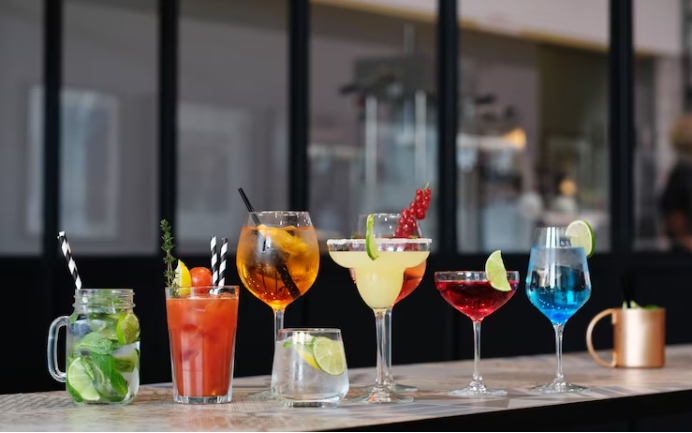Are you struggling to create compelling descriptions for your restaurant’s menu items? Do you find that customers are often confused or unimpressed by your menu descriptions? If so, you’re not alone. Crafting effective menu descriptions is an art that many restaurant owners and chefs struggle with, but it’s an essential skill for attracting and retaining customers.
In this article, we’ll explore strategies for creating menu descriptions that entice your customers and accurately convey the flavors and ingredients of your dishes. From understanding your target audience to using descriptive language and imagery, we’ll cover the key elements of successful menu descriptions.
By following these tips and continuously refining your approach, you can create a menu that not only satisfies your customers’ cravings but also leaves them excited to come back for more.

Understanding Your Target Audience
If you want your customers to crave your dishes, you need to understand their preferences and desires. This means taking cultural influences and dietary restrictions into account when crafting your menu descriptions.
For example, if your restaurant specializes in Italian cuisine, it’s important to know that many Italian dishes are heavy on meat and dairy, which may not appeal to vegans or those with lactose intolerance. By including clear descriptions of ingredients and potential allergens, you can make it easy for customers to choose dishes that suit their needs.
In addition to dietary considerations, cultural influences can also play a role in how your customers perceive your menu items. For instance, some cultures place a high value on spicy or bold flavors, while others prefer milder options.
By understanding your target audience, you can tailor your menu descriptions to appeal to their tastes and preferences. This might mean using descriptive language to highlight the unique flavors or ingredients in a particular dish, or including cultural references that resonate with your customers. The more you can connect with your audience through your menu descriptions, the more likely they are to keep coming back for more.
Using Descriptive Language and Imagery
You’ll love how using descriptive language and vivid imagery in your menu descriptions transports your taste buds to a world of deliciousness. Sensory language is a powerful tool that can help you create an emotional connection with your customers.
By using descriptive words that appeal to the senses, you can make your menu items sound more enticing and irresistible.
Additionally, menu design plays a key role in how your customers perceive your restaurant and its offerings. Use images and graphic design to create an eye-catching menu that highlights your most popular items.
Incorporate descriptive language and sensory words to create a complete experience that your customers won’t soon forget. Remember, the goal of your menu is to entice your customers to try your food, so make sure that your descriptions are mouth-watering and irresistible.
By using descriptive language and imagery, you can create a menu that brings your restaurant to life and leaves a lasting impression on your customers.
Highlighting Key Ingredients and Flavors
Highlighting the key ingredients and flavors in your menu items can bring a burst of excitement to your taste buds. By emphasizing the unique flavor pairings and sensory appeal of your dishes, you can entice customers to try something new and exciting.
For example, if you have a dish that features a spicy and sweet combination, make sure to highlight those flavors in the description. Use descriptive language to paint a picture of the dish and its flavors, such as “succulent chicken smothered in a fiery-sweet glaze.”
In addition to highlighting key ingredients and flavors, it’s important to consider the sensory appeal of your dishes. Use descriptive words to evoke the senses and create a mouth-watering experience for your customers.
For example, if you have a dish that features a rich and creamy sauce, describe it as “velvety”or “decadent.”If you have a dish that features a crispy texture, describe it as “crunchy”or “golden-brown.”
By highlighting the sensory appeal of your dishes, you can create a more enticing and memorable dining experience for your customers.
Organizing Your Menu for Clarity
When organizing your menu, make sure it’s easy for your customers to find what they’re looking for. One way to achieve this is by categorizing dishes based on their main ingredients or types of cuisine. This will allow customers to quickly navigate your menu and find the dishes they’re interested in, without having to scan through a long list of options.
Menu layout and font choices can also have a significant impact on the clarity of your menu. Use a font that’s easy to read and consider using bold or larger font sizes for the most important dishes.
Additionally, consider using pricing strategies and upselling techniques to guide customers towards more profitable dishes. For example, you could use a slightly larger font size for the dishes with higher profit margins or use bold text to draw attention to dishes that are popular or highly recommended.
By organizing your menu in a clear and thoughtful way, you’ll be able to help your customers make informed decisions and increase your restaurant’s overall profitability.
Continuously Updating and Refining Your Descriptions
As a savvy restaurant owner, staying ahead of the competition means keeping your customers engaged with mouth-watering descriptions that make their taste buds dance. And the key to achieving this is by continuously updating and refining your menu descriptions.
You can start by paying attention to guest feedback and taking note of what dishes they loved, and which ones were not so popular. This feedback will help you determine which dishes to highlight and how to describe them in a way that resonates with your customers.
Another effective way to refine your menu descriptions is by conducting competitor analysis. Take a look at what your competitors are offering and how they describe their dishes. Are they using unique and descriptive words that entice customers? Or are they sticking to generic descriptions that don’t really stand out? Use this information to improve your own descriptions and make them more compelling.
Remember, your menu is a reflection of your brand, and by continuously updating and refining your descriptions, you can keep your restaurant’s customers engaged and coming back for more.
Are you struggling to manage your restaurant’s waitlists and reservations? Read more.
Frequently Asked Questions
How can restaurant menu descriptions affect a customer’s perception of the overall dining experience?
Your perception of a dining experience can be influenced by language choice and sensory appeal in menu descriptions. Social media also plays a role in shaping expectations.
What role do cultural and regional influences play in crafting effective menu descriptions?
When crafting your menu descriptions, consider cultural influences and regional flavors. Highlight unique ingredients and preparation methods that reflect the cultural background and local cuisine, enticing customers to try something new and authentic.
How can a restaurant effectively balance the need for detailed descriptions with the desire for concise and easy-to-read menus?
Balancing detail and brevity in your menu descriptions is key to meeting customer preferences and needs. Consider using clear and concise language, highlighting unique dishes, and providing necessary details without overwhelming the reader.
What are some common mistakes that restaurants make when writing menu descriptions, and how can these be avoided?
Common mistakes when writing menu descriptions include using overly complex language, not highlighting popular dishes, and not including enough detail. Writing tips include being concise, using descriptive language, and focusing on the customer’s experience.
Can menu descriptions be used to strategically upsell certain dishes or ingredients, and if so, what are some effective techniques for doing so?
Use upsell techniques and persuasive language to highlight premium and unique ingredients. Mention the dish’s health benefits, flavor profile, and how it’s prepared. Suggest pairing with specific drinks and sides.
Conclusion
So there you have it – effective strategies for crafting mouthwatering restaurant menu descriptions that will leave your customers drooling.
Remember, understanding your target audience is key to creating a restaurant menu that resonates with them, so take the time to do your research and tailor your descriptions accordingly.
Using descriptive language and imagery, highlighting key ingredients and flavors, and organizing your restaurant menu for clarity are all important tactics to consider.
And don’t forget to continuously update and refine your descriptions based on restaurant’s customer feedback and changing trends.
With these strategies in mind, you’re sure to have a menu that not only entices diners to order, but keeps them coming back for more.
Happy writing!



